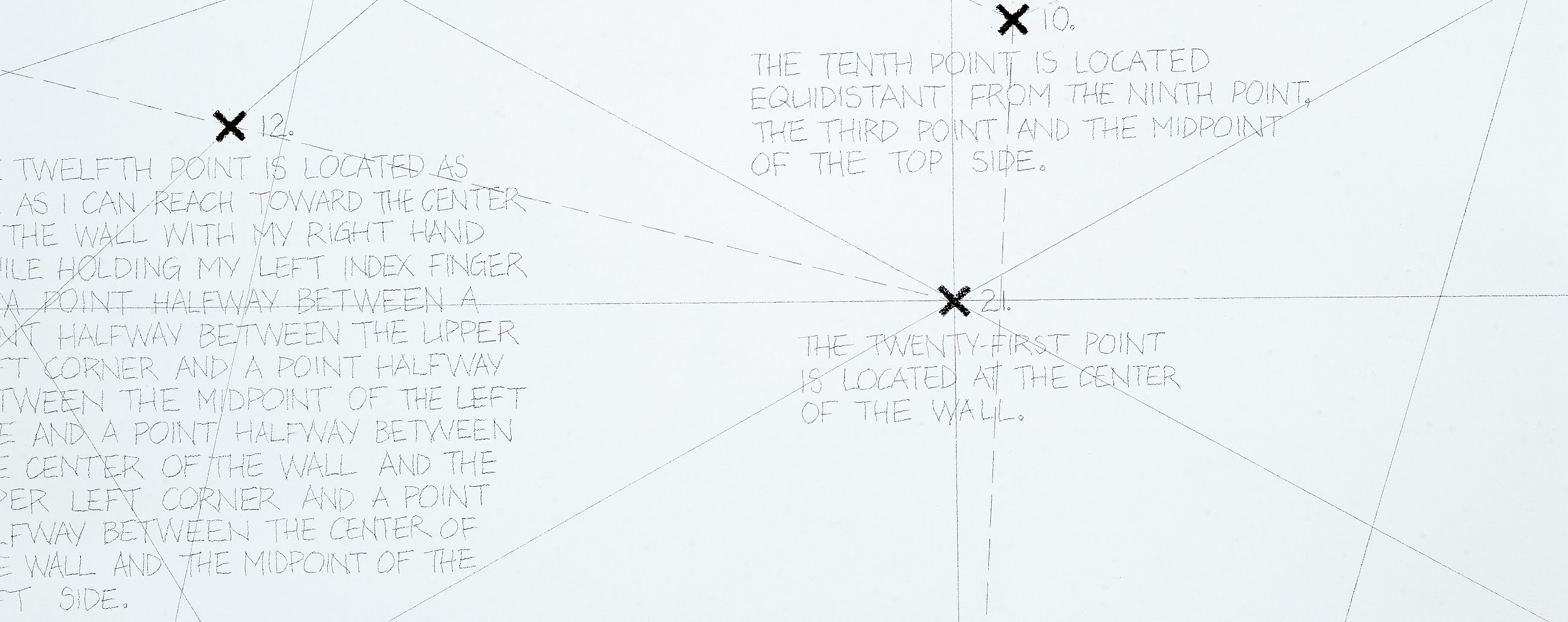Sol LeWitt
- Sol LeWitt
The location of one hundred random specific points. (The locations are determined by the drafters.)
August 1977
Black pencil and black crayon
Courtesy of the Estate of Sol LeWitt
First Installation
Art & Architecture building, Yale University, New Haven
First Drawn By
Jo Watanabe, Sol LeWitt
Wall Drawing 305 is composed of one hundred random specific points that are determined by the draftsman. The points are random in that they may be placed anywhere on the wall. The draftsman uses Sol LeWitt’s vocabulary and geometric lexicon to guide the mapping of the points. This lexicon includes the corners, midpoints and center of each wall, which serve as reference points that are connected and traversed by lines and arcs. The one hundred points are specific in that they are created at the meeting of the junctures of these formal elements. As the draftsman maps out each generated point, he or she writes a description of how he or she arrived at that point next to it. This allows the viewers to trace the process of the placement of the points.
Wall Drawing 305 is one of a series of drawings in which LeWitt experimented with textual instructions that direct the draftsman to construct shapes on the wall. Called location drawings, these works are done in black pencil with geometric figures emphasized in crayon, foregrounding the process of drawing as a problem-solving mechanism.
Backstory
Wall Drawing 305, like many of LeWitt’s wall drawings, calls for the random application of forms, bringing up questions about how much the draftsmen should work to contrive that randomness. LeWitt’s response to the conundrum is to encourage draftsmen
not [to] think too much in some situations. The use of the idea of the random is meant to preclude the conscious placement of elements to form a pattern.1
1 Andrea Miller Keller, Excerts from a Correspondence, 1981-1983, Sol LeWitt Critical Texts, AEIUO, Incontri Internazionali D’Arte, Rome, Italy, editing by Adachiara Zevi, 1995.


